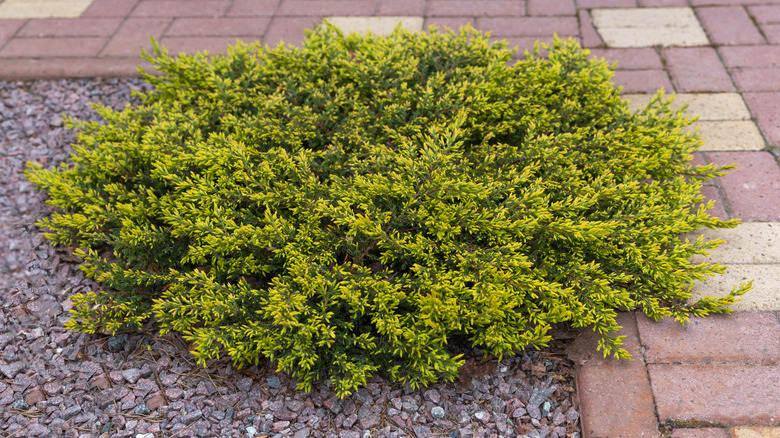The Easy-To-Grow Ground Cover That Can Protect Sloped Backyards From Soil Erosion
We may receive a commission on purchases made from links.
Dealing with a sloped backyard and worried about soil erosion? It can be frustrating, but here's a natural, no-fuss solution that'll fix the problem and make your yard look great: creeping juniper. Creeping juniper (Juniperus horizontalis) is an evergreen shrub that stays close to the ground, spreading out and creating a thick carpet of greenery. Because it's native to North America, it's already well-suited to tough terrains — rocky areas, dry soil, and even poor soil won't faze it. So if you've got a tricky slope to manage, this ground cover plant is a great alternative to grass. You can buy a potted one on Amazon for $17.
The way creeping juniper grows makes it perfect for holding your backyard together. As it spreads, its roots extend into the ground, grabbing hold of the soil. This natural root system works like a net, locking the soil in place and minimizing the risk of it getting washed away. Even better? It's an evergreen, so your slope will have year-round protection without any gaps. That's a major bonus if you live somewhere that experiences seasonal downpours or runoff.
On top of all that, creeping juniper is low-maintenance. Once it's settled in, you won't have to fuss over it much at all. It doesn't need a lot of water and can handle droughts. And if you're worried about this plant taking over your yard, don't be. Creeping juniper isn't considered invasive anywhere in the U.S., so you can plant it without fear of it going wild and crowding out other plants.
How to grow creeping juniper as a ground cover
The first step is to pick the right spot. Creeping juniper loves full sun, so choose an area in your yard that gets at least six to eight hours of direct sunlight a day. While it can handle a bit of shade, it really thrives in sunny spots and will spread out more effectively there. Also, make sure the soil is well-draining — this plant isn't a fan of soggy ground. If your slope tends to stay damp, you might want to mix in some sand or gravel to improve the drainage before planting.
When it comes to timing, aim to plant creeping juniper in the spring or early fall. These cooler seasons give the plant a better chance to settle in before the summer heat or winter cold sets in. Dig a hole slightly larger than the root ball, and if you're planting multiple, space them about 6 to 12 feet apart to allow for spreading. After planting, give them a good watering to help them get established. After that? You can cut back on the watering because creeping juniper is drought-tolerant and doesn't need much attention once it's growing.
Aside from controlling erosion, creeping juniper comes with other perks. Its soft, evergreen foliage provides a constant splash of green, making it a year-round asset to your yard. With its blue-green needles and low-growing habit, it creates a textured, natural carpet that looks great with all kinds of landscaping styles. It complements beautiful rock gardens in your yard, works well as a low border, and can be used to fill in gaps between taller shrubs and perennials.

